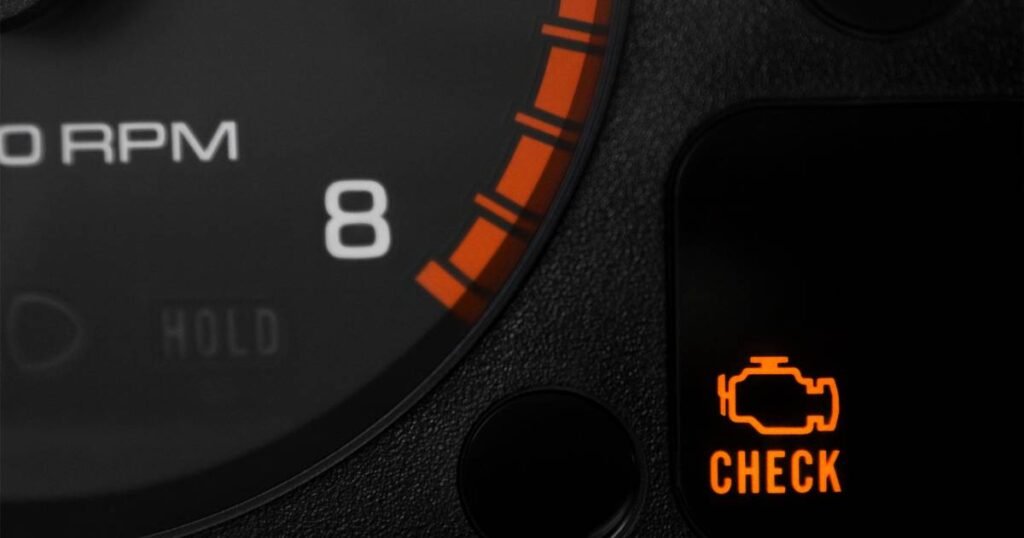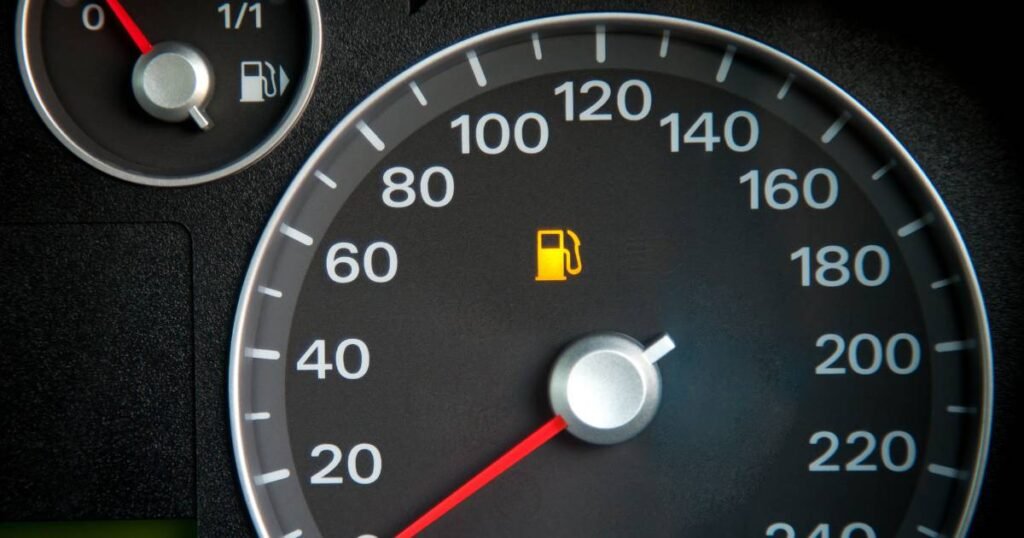The check engine light is a vital part of your vehicle’s dashboard, serving as an early warning system to alert you of potential problems. While it can be alarming to see it illuminated, it’s essential to understand that it doesn’t always indicate a severe issue.
However, it’s crucial not to ignore it and have your vehicle checked by a qualified technician to diagnose the underlying cause.
Table of Contents
Does the Check Engine Light Come On For an Oil Change?
It’s Not Always About Oil.
While a check engine light can sometimes be related to oil issues, it does not directly indicate an oil change need. Instead, it signals a broader range of potential problems within the engine or emissions system.

What are the Common Reasons for an Illuminated Check Engine Light?
1. Low Oil Level or Dirty Oil
One of the most common triggers for a check engine light is an issue with your engine oil.
This could be due to low oil levels or oil that has become excessively dirty and needs to be replaced.
Use the dipstick in your engine compartment to check the oil level. If the oil appears dark or black or is below the recommended level, schedule an oil change promptly.
2. Faulty Oxygen Sensor
The oxygen sensor plays a crucial role in monitoring the oxygen levels in your exhaust system, ensuring optimal fuel efficiency and emissions control.
A damaged or malfunctioning oxygen sensor can trigger the check engine light.
A common symptom of a faulty oxygen sensor is a noticeable decrease in fuel economy. If you observe a drop in your gas mileage, it’s advisable to have your oxygen sensor checked by a technician.
3. Loose Gas Cap
A loose or improperly sealed gas cap can also cause the check engine light to come on.
This is because a loose cap can allow fuel vapors to escape, which can interfere with the emissions system.
If you suspect a loose gas cap, pull over and tighten it securely. The check engine light should typically turn off within a few minutes. However, if it remains illuminated, seek professional assistance.
4. Issues with the Catalytic Converter
The catalytic converter is responsible for reducing harmful emissions from your vehicle’s exhaust.
A damaged or malfunctioning catalytic converter can trigger the check engine light and cause a decline in fuel economy.
In some cases, a faulty catalytic converter can also lead to an overheating engine. If you notice these symptoms, it’s essential to have your vehicle inspected promptly.
5. Worn Spark Plugs
Spark plugs are essential for igniting the fuel mixture in your engine’s cylinders.
Over time, spark plugs can become worn or fouled, leading to ignition problems and decreased engine power.
If you suspect that your spark plugs are the cause of your check engine light, it’s crucial to have them replaced as soon as possible to prevent further damage to your engine.
6. Oil-Related Reasons for a Check Engine Light
Low Oil Pressure: If oil levels are too low or there’s a problem with oil pressure, the light may come on to warn of potential engine damage.
Dirty Oil: Overly dirty oil can also trigger light, as it can clog passages and reduce lubrication effectiveness.

What are the Effects of Low Oil on Engine Health?
Overheating: Insufficient oil can cause overheating due to increased friction and heat generation. Overheating can damage engine components and, in severe cases, lead to complete engine failure.
Increased Wear and Tear: Engine parts experience more friction without adequate lubrication, accelerating wear and tear. This shortens component lifespans, decreases performance, and raises repair costs.
How serious is a check engine light?
It signals a potential problem that warrants attention. While some causes are minor, others can lead to significant damage or safety hazards if ignored.
So, What Should You Do When the Check Engine Light Appears?
Panic not! Instead, follow these steps:
- Seek Expert Help: Don’t ignore the light. Consult a mechanic to diagnose the cause using specialized diagnostic tools.
- Address Underlying Issues: Depending on the diagnosis, the solution might involve an oil change, sensor replacements, or repairs to clogged components.
- Preventative Maintenance: Regular oil changes and checkups remain crucial for optimal engine health and to avoid future check engine light dilemmas.
An illuminated check engine light is a warning, not a death sentence. Prompt diagnosis and appropriate repairs can get you back on the road smoothly, while consistent maintenance keeps the light off and your engine purring happily.
Can I drive with my check engine light on?
While driving with the check engine light illuminated for an extended period is not recommended, it’s generally safe to drive a short distance to a nearby service center for diagnosis. However, if the light is flashing, it indicates a more serious issue that requires immediate attention.
How can I prevent issues that may trigger the check engine light?
Regular oil changes and preventive maintenance measures, such as inspecting air filters, maintaining tire pressure, replacing worn belts and hoses, scheduling tune-ups, monitoring fluid levels, and promptly addressing warning lights, can help prevent problems that may activate the check engine light.
How much does it cost to diagnose a check engine light?
The cost of diagnosing a check engine light can vary depending on the specific issue and the mechanic’s rates. However, it typically ranges from $50 to $150, while more complex issues can exceed $1000.
Can I fix the check engine light myself?
In some cases, such as a loose gas cap, you may be able to address the issue yourself. However, for most check engine light problems, it’s best to consult a qualified technician to ensure proper diagnosis and repair.
What are the most popular auto stores that fix check engine lights?
Many auto stores offer check engine light diagnosis and repair, but the best option depends on the issue and your location. Here are some common choices:
- Goodyear Auto Service: This is a nationwide chain that offers various services, including diagnostics, repairs, and maintenance. You can make an appointment online or by phone and get discounts if you are a Lyft driver.
- O’Reilly Auto Parts: This nationwide chain sells auto parts and accessories and offers free check engine light diagnostics. You can visit your local store and get a code reader to scan your vehicle and get a list of possible fixes.
- AutoZone: This is a similar chain to O’Reilly, with over 6,000 locations across the US. It also provides free check engine light diagnostics with its Fix Finder service, which reads information from the check engine, ABS, and maintenance lights. You can find the closest store to you online or by phone.
- Pep Boys: Provides engine light diagnostics and repairs alongside other car maintenance services.
It is always recommended to compare quotes and check mechanic credentials before making a decision. You can also use online resources to learn more about common check engine light causes and repair costs.
Recommended:
How Much Is an Oil Change at Pep Boys?
Final Verdict
While alarming, the check engine light serves as a vital communication channel between your car and you. While an oil change alone won’t directly trigger it, neglecting proper maintenance can contribute to underlying issues that do.
Regular servicing and prompt attention to the light are key to keeping your engine healthy and your drives worry-free.
FAQs
Can a check engine light come on briefly after an oil change?
Yes, oil can take a few minutes to circulate and build pressure after a change, potentially causing a brief light illumination.
Does low oil directly cause the check engine light to come on?
No, low oil levels typically don’t directly trigger the check engine light. However, low oil pressure, which can result from low oil levels, can activate the light.
Does overdue oil cause a check engine light to light up?
While overdue oil changes themselves don’t directly trigger the light, the resulting low oil pressure or other oil-related issues can.
What is the most common cause of the check engine light?
The main reasons for a check engine light vary by vehicle, but common issues include a loose gas cap, malfunctioning oxygen sensors, worn spark plugs, and problems with the mass airflow sensor.
Why is my check engine light on, but my car runs fine?
Even if your car appears to run smoothly, a check engine light could indicate early warning signs, minor sensor malfunctions, or emission control issues.
What is the first thing to check when the engine light comes on?
When the check engine light turns on, it’s important to stay composed and not overlook it. Safely stop your car, consult the owner’s manual, observe any performance changes, and get a diagnostic code scan. Then, seek professional advice for a proper diagnosis and repair. Keep in mind, this light indicates a warning, not an immediate disaster.
Can a loose gas cap cause a check engine light?
Yes, a loose or faulty gas cap can allow fuel vapors to escape, affecting emissions and triggering the light.


